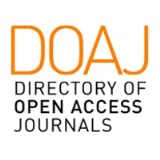Life of Writing II: The Constructivist Teacher
DOI:
https://doi.org/10.58265/pulso.4874Abstract
In this article, the fundamental techniques for instructing students on how to enhance their writing skills using the constructivist approach are outlined. The article highlights the significance of writing as a learning tool and explains how teachers can tailor their teaching assistance to approach the near development area. The teacher uses communicative strategies to provide the necessary support to the students and assists them in developing strategies that aid them in creating written works that facilitate communication through writing. In this process, the teacher plays a crucial role in learning by motivating, encouraging, and selecting various types of texts and materials that inspire children to write with passion and enthusiasm. The article also provides recommendations for a well-planned and meaningful approach to writing in the classroom.
Downloads
References
CARLINO P. y SANTANA D. (1996) Leer y escribir con sentido. Madrid: Visor.
CASSANY, DANIEL. (1993). Reparar la escritura: Didáctica de la corrección de lo escrito. Barcelona: Graó.
COLL SALVADOR, C. (1991). Aprendizaje escolar y construcción del conocimiento. Barcelona: Paidós.
CUETOS, F. (1990). Psicología de la lectura: Diagnóstico y tratamiento. Madrid: Escuela Española.
DÍEZ VEGAS, C. y PARDO DE LEÓN, P. (2000). Curso de experto Universitario en Lenguaje Escrito en Educación Infantil: Estrategias de trabajo en grupo. Madrid: UNED.
FERNANDEZ BERROCAL, P. Y MELERO ZABAL, MªA. La interacción social en contextos educativos. Madrid: Siglo XXI.
FUNNELL, Elaine. (1995). Learnig to read. Blackwell Publishers.
GARCÍA VELÁZQUEZ, A. (2001). La vida de la escritura I. Pulso, nº 24, 27-46.
GOODMAN, Y. M. y GOODMAN, K.S. (1990). Vygotsky in a whole-languaje perspective. En L.c. Moll (ED.) Vygotsky and education. Canmbridge: Canmbridge University Press.
LACASA, P., ANULA, J. y MARTÍN, B. (1995). Leer y escribir con sentido: ¿Cómo lograrlo desde la perspectiva del lenguaje integrado? Comunicación, Lenguaje y Educación, (25, págs 31-49).
LACASA. P., PARDO, P., MARTIN, B. y HERRANZ, P. (1995) Texto y contexto social. Aprendiendo a planificar un taller de escritura. Infancia y aprendizaje, (69-70, págs 157-182).
LEBRERO BAENA , Mª P. y LEBRERO BAENA, Mª T. (1991) Cómo y cuando enseñar a leer y escribir. Madrid: Síntesis.
MARTÍ, E y SOLÉ, I (1997). Corregir un trabajo en grupo efi caz. Cuadernos de Pedagogía, 255.
MARTÍN, B. (1995). Lenguaje integrado, sus creencias sobre la alfabetización. Comunicación, Lenguaje y Educación, (25, págs 21-29).
MARUNY C. L., MINISTRAL M. M. y MIRALLES T. M. (1997). Escribir y leer. Zaragoza: Edelvives.
MATA, SALVADOR. (1997). Dificultades en aprendizaje de la expresión escrita: Una el perspectiva didáctica. Málaga: Aljibe.
MONEREO, C. Y CLARIANA, M. (1993). Profesores y alumnos estratégicos. Madrid: Pascal.
OLSON, D. (1994) The word on paper. Cambridge: Cambridge University Press.
RÍUS, M. (1982). Planifi cación de objetivos para la maduración del lenguaje. Madrid: Seco-Olea.
RUÉ Y DOMINGO, J (1989).El trabajo cooperativo por grupos. Cuadernos de Pedagogía, 170, 18-70.
SOLÉ, I (1991).¿Se puede enseñar lo que se ha de escribir? Cuadernos de Pedagogía, 188, 33-35.
TEBEROSKY (1992). Aprendiendo a escribir. Barcelona: Horsori.
TOLCHINSKY, L (1993). Aprendizaje del lenguaje escrito: procesos evolutivos e implicaciones didácticas. Barcelona: Anthropos.
WOOD, D. J., BRUNER, J. y ROSS,G (1976). The role of tutoring in problem solving. Journal of chid Psychology and Psychiatry, 19, 89-100.
ZAYAS, FELIPE. (1995). Ortografía y aprendizaje de la lengua escrita. En Aula de Innovación Educativa nº 56, pp. 9-15.
Downloads
Published
How to Cite
Issue
Section
License
Copyright (c) 2022 Pulso. Revista de educación

This work is licensed under a Creative Commons Attribution-NonCommercial-NoDerivatives 3.0 Unported License.
This journal offers immediate open access to its content based on the idea that offering readers free access to research favours a global exchange of knowledge.
Papers are published in the electronic version of the journal under a Creative Commons License: Attribution-NonCommercial-No derivatives 4.0 International
Authors are allowed and encouraged to promote the post-print version (reviewed and accepted for publication version) of their work online before publishing them. This favours their earlier circulation and dissemination and thus a possible increase in their citation and reach among the academic community.













